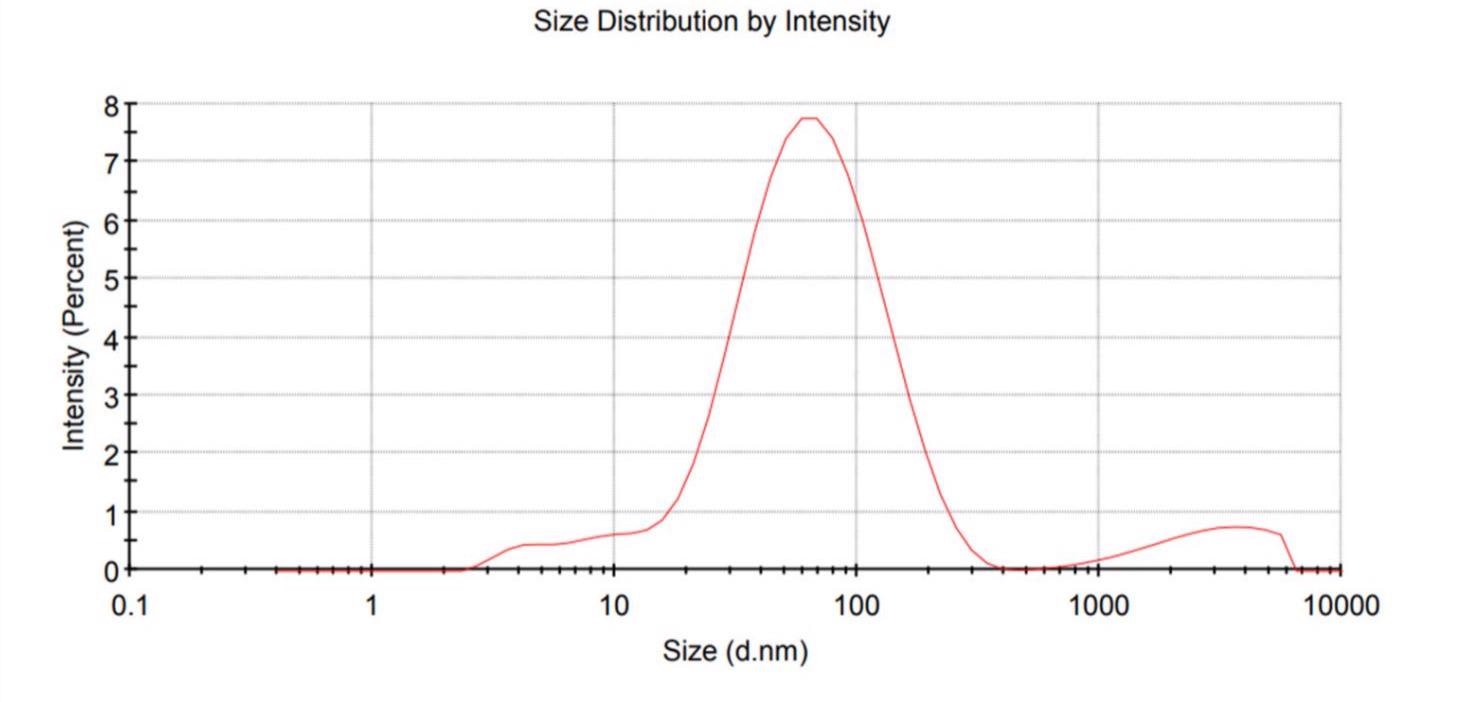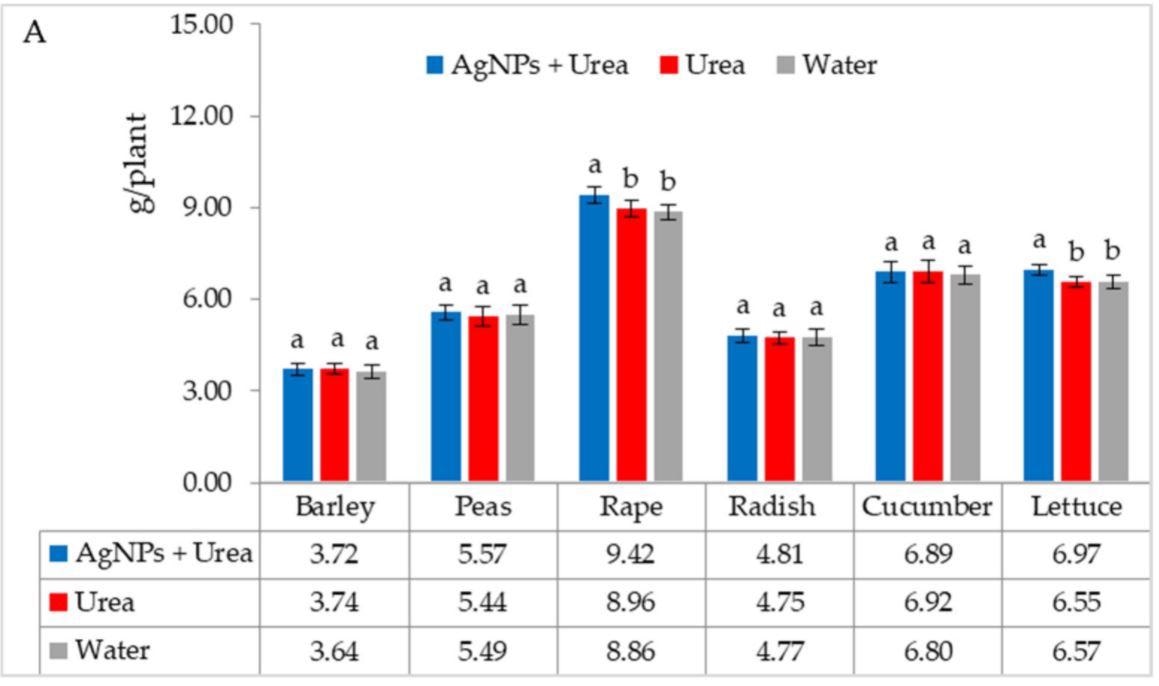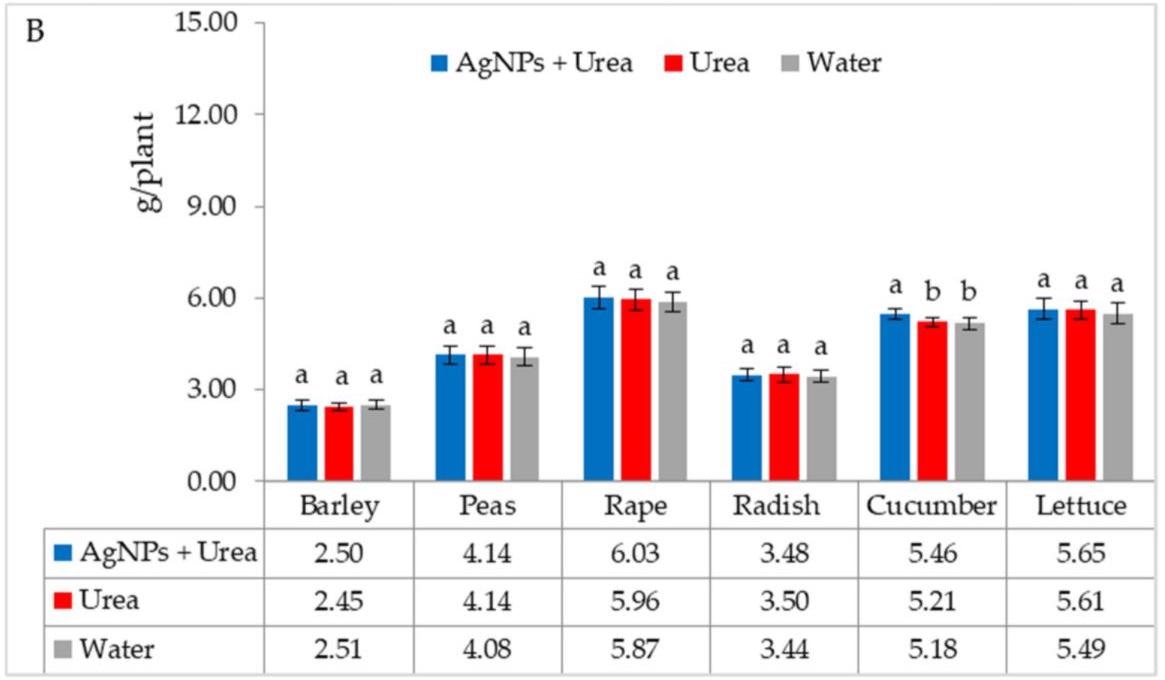.jpg) By Susha Cheriyedath, M.Sc.Reviewed by Skyla BailyJan 26 2022
By Susha Cheriyedath, M.Sc.Reviewed by Skyla BailyJan 26 2022In a recent study published in the journal Materials, researchers investigated the effect of a fertilizer solution containing silver nanoparticles (AgNPs) on agricultural and horticultural plant seed germination. They also analyzed the influence of AgNPs on plant growth and yields.

Study: Silver Nanoparticles (AgNPs) in Urea Solution in Laboratory Tests and Field Experiments with Crops and Vegetables. Image Credit: Kateryna Kon/Shutterstock.com
Nanotechnology and nanomaterials such as AgNPs are becoming increasingly important in economics, science, and agriculture. In terms of biological activity, nanomaterials influence physiological processes, health, growth, and yields of plants. However, nanomaterials at high concentrations can be toxic to the environment and lead to microbial resistance.
The Study
In this study, researchers produced a new fertilizer using a urea solution with small amounts of AgNPs obtained via the reduction of silver nitrate V. The AgNPs as-prepared were separated from the solution using centrifugation, and the size of NPs were measured using dynamic light scattering (DLS).
Using laboratory tests, they assessed the impact of a fertilizer solution with 10 ppm AgNPs on the germination of seeds of agricultural plants such as peas, barley, and oilseed rape, and vegetables such as cucumber, radish, and lettuce. The seed germination was conducted in a vegetation chamber where the growth conditions of the plant were regulated. They also examined the effect of foliar application of this solution on stomatal conductance, chlorophyll content, and seedling biomass.
The authors conducted field experiments to analyze the influence of foliar application of 15 ppm AgNPs in working liquid on physiological parameters of plants and cucumber and rape plant yields.
The team performed plant growth tests in optimal habitat conditions where day and night lengths were 16 h and 8 h, respectively, and day and night temperatures were 20 °C and 13 °C, respectively, except for cucumber, for which they were 24 °C and 18 °C, respectively.
They also subjected the plants to environmental stress such as thermal stress by lowering the temperature by 5 °C during the day and 3 °C during the night. Water stress involved the reduction of the substrate’s water capacity from 60 to 40%.

Size distribution report of AgNPs. Image Credit: Jaskulski, D et al., Materials
A non-contact chlorophyll meter was used to determine chlorophyll content, and plant biomass was measured by dry weight at the end of the research period using a drier with forced air circulation at 105 °C.
Results
The results show that the AgNPs in the fertilizer tested in the study reduced the pathogen infestation of the germinating seeds and had a positive effect on the productivity, yields, and physiological processes of plants.

Plant biomass under optimal—(A) and water stress conditions—(B) depending on the presence of AgNPs in the substrate; urea solution with AgNPs (AgNPs + Urea), urea solution (Urea), water (Water). a, b—letters indicate a significant difference in the biomass of individual plant species at p < 0.05. Image Credit: Jaskulski, D et al., Materials
Under optimal seed germination conditions, AgNPs did not have a significant effect on germination energy or capacity, the length of sprouts, and the number of abnormal barley, rape, and peas sprouts. Under thermal stress, AgNPs increased the germination energy and sprout length of barley and rapeseed compared to seeds germinated on substrates moistened with water. AgNPs also reduced infections in germinating seeds of all the tested plants under conditions of thermal stress.
The response of the plants was based on their habitat conditions and species. In cucumber and oilseed rape, the use of AgNPs led to increased stomatal conductance and chlorophyll content and higher seedling masses, mainly under thermal stress. The seedling mass of cucumber and rape treated with AgNPs under thermal stress was 8.4% and 6.9% higher, respectively, than plants that were treated with urea solution, and 8.1% and 7.5% higher than those treated with water.

Plant biomass under optimal—(A) and water stress conditions—(B) depending on the presence of AgNPs in the substrate; urea solution with AgNPs (AgNPs + Urea), urea solution (Urea), water (Water). a, b—letters indicate a significant difference in the biomass of individual plant species at p < 0.05. Image Credit: Jaskulski, D et al., Materials
Under the same conditions, the seedling mass of lettuce treated with AgNPs was also higher compared to plants treated with water. The foliar application of AgNPs did not significantly affect the seedling mass of plants in optimal thermal conditions.
Conclusions
This study illustrates the beneficial effects of AgNPs on the yield of the plants studied in unfavorable weather conditions. The positive results of agricultural tests even under stressful conditions show that fertilizer containing AgNPs may help reduce the use of highly concentrated mineral fertilizers and pesticides.
The results of lab tests and field experiments in this study show that AgNPs at concentrations of 10–15 ppm had a beneficial effect on the physiological parameters, seed germination, and overall productivity of agricultural as well as horticultural plants. However, the response of plants to AgNPs depends on their species and water, thermal, and weather conditions.
Although the use of fertilizers containing AgNPs to reduce infections in germinating seeds and enhance plant productivity, physiological processes, and plant yields are in line with sustainable agriculture concepts, more research needs to be conducted on the impact of AgNP-fertilizers on humans and the environment.
Disclaimer: The views expressed here are those of the author expressed in their private capacity and do not necessarily represent the views of AZoM.com Limited T/A AZoNetwork the owner and operator of this website. This disclaimer forms part of the Terms and conditions of use of this website.
Source:
Jaskulski, D.; Jaskulska, I.; Majewska, J.; Radziemska, M.; Bilgin, A.; Brtnicky, M. Silver Nanoparticles (AgNPs) in Urea Solution in Laboratory Tests and Field Experiments with Crops and Vegetables. Materials 2022, 15, 870. https://www.mdpi.com/1996-1944/15/3/870